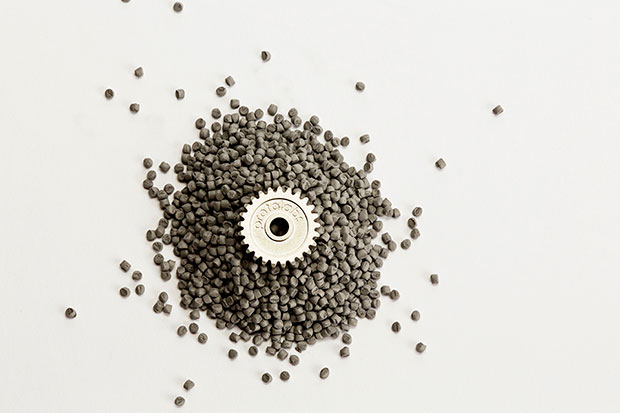Editor’s Pick: More Options for Metal Injection Molding

Proto Labs has announced three new low-alloy steel materials options to its metal injection-molding materials lineup. Image courtesy of Proto Labs Inc.
April 8, 2015
 Dear Desktop Engineering Reader:
Dear Desktop Engineering Reader:
 Metal injection molding (MIM) is a nifty manufacturing process. With it, you can produce metal parts and molds with intricate geometries and complex shapes that would chew up your machining budget. MIM-built parts have nice surface finishes and good strength. Their mechanical properties are comparable to wrought materials.
Metal injection molding (MIM) is a nifty manufacturing process. With it, you can produce metal parts and molds with intricate geometries and complex shapes that would chew up your machining budget. MIM-built parts have nice surface finishes and good strength. Their mechanical properties are comparable to wrought materials.
If your gig involves automotive, consumer electronics, medical device or industrial manufacturing, you probably know that. You also probably know that, traditionally, MIM has been seen as cost-effective only for large production runs, definitely not prototyping. That no longer happens to be the case.
See, manufacturing services provider Proto Labs set out to change tradition a number of years ago, and they recently knocked it down yet another peg. Late in March, they announced three new low-alloy steel material options for their MIM service, which is known as Protomold.
In a nutshell, the news for designers and engineers is that you now have cost-effective options for both prototyping and low-volume metal injection molded parts. You’re talking efficient too: Proto Labs is known for its ability to turn orders around quickly – one to 15 days depending upon the project.
So what are these new materials and what are they good for? I hear you ask. Two are nickel steel materials and the other is a chrome-moly material. Proto Labs already offered stainless steel material options, BTW.
You can use the materials in most applications requiring low-alloy steel materials. That could mean components for a car transmission, door hardware or even parts for archery gear. Your imagination is your limit. After all, MIM was traditionally too pricey for prototyping and low-volume metal manufacturing until now.
 Proto Labs has announced three new low-alloy steel options to its metal injection-molding materials lineup. Image courtesy of Proto Labs Inc.
Proto Labs has announced three new low-alloy steel options to its metal injection-molding materials lineup. Image courtesy of Proto Labs Inc.Which, of course, means you gotta learn what’s in MIM for you. So, first, hit today’s Pick of the Week link and get the brief on the new materials. At the bottom of the write-up, you’ll find a link to a white paper called “Metal Injection Molding.” Get it. It’ll give you the skinny on MIM, how it works, advantages and the like. The paper does a great job explaining how MIM differs with and complements technologies like plastic injection molding, direct metal laser sintering and CNC (computer numerically controlled) machining.
Traditions are nice things. Still, MIM could be the cost-effective way to make the prototypes and low-volume metal injection molded parts you’ve imagined. That means MIM could make some of your old traditions start seeming decidedly de minimis. Good stuff.
Thanks, Pal. – Lockwood
Anthony J. Lockwood
Editor at Large, Desktop Engineering
Learn more about Proto Labs’ new low-alloy steel materials for metal injection molding.
Subscribe to our FREE magazine, FREE email newsletters or both!
About the Author
Anthony J. Lockwood is Digital Engineering’s founding editor. He is now retired. Contact him via [email protected].
Follow DE





